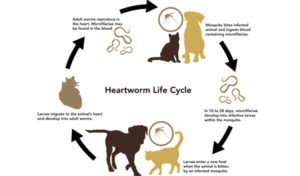
COVID-19 and PETS
We are getting lot of queries from the clients regarding COVID-19 and how it affects pets. In this blog we have tried to answer few most common questions about COVID-19 and SARS-CoV-2 as it pertains to veterinarians and pets.
A novel coronavirus, named severe acute respiratory syndrome coronavirus 2 (SARS-CoV-2), was identified as the cause of an outbreak of respiratory illness first detected in Wuhan, China in 2019. The illness caused by this virus has been named coronavirus disease 2019 (COVID-19).
Can SARS-CoV-2 infect dogs, cats and other animals?
We don’t really know. Preliminary evidence suggests that one dog in Hong Kong that lived with a person infected with the virus tested positive multiple times over multiple days. This suggests that the dog was in fact infected, rather than just contaminated with the virus. In mid-March, 2020, the World Health Organization stated that there is no evidence at present that dogs and cats can be infected with SARS-CoV-2, develop the disease, or spread the disease. It is important to note that SARS-CoV-2 was not isolated from the dog in Hong Kong – only RNA was identified via RT-PCR.
SARS-CoV-2 utilizes two receptors in humans: It binds Angiotensin-Converting Enzyme 2 (ACE2) and then fuses with the cell membrane with help from a type-II transmembrane serine protease (TMPRSS2) (similar to the original SARS virus in the early 2000s). Sequence homology for ACE2 at the critical binding sites suggests that SARS-CoV-2 might be able to bind to ACE2 receptors in cats and ferrets. Given the findings from the one dog in Hong Kong (see Worms-and-Germs Blog), we can reasonably suspect that dogs might also bind the virus. Rats and mice appear not to be able to bind the virus, because their ACE2 receptors are different enough from those of dogs or cats.
Infection, however, requires additional steps than just virus binding and membrane fusion. Viral replication, avoiding the host immune response etc. are also necessary components of infection and potential transmission.
Can infected dogs and cats transmit the disease to people?
Currently, no evidence exists that dogs and cats, even if infected, can transmit the SARS-CoV-2 virus to humans. Indeed, no infected cats have been identified. To date, all transmission has been human-to-human, after the initial jump from bats (most likely) to humans. It is worth noting that the original SARS virus could also bind to the dog and cat ACE2 receptor, but no reported cases of pet-to-human transmission of that virus were ever reported, although that outbreak was much smaller and investigation of domestic animals was limited.
Can pets serve as fomites in the spread of COVID-19?
(A fomite is an object such as a dish or a doorknob that may be contaminated with infectious organisms and serve in their transmission. Answer from the American Veterinary Medical Association)
This question has been addressed by the American Veterinary Medical Association. Here is the direct quotation:
“COVID-19 appears to be primarily transmitted by contact with an infected person’s bodily secretions, such as saliva or mucus droplets in a cough or sneeze.COVID-19 might be able to be transmitted by touching a contaminated surface or object (i.e., a fomite) and then touching the mouth, nose, or possibly eyes, but this appears to be a secondary route. Smooth (non-porous) surfaces (e.g., countertops, door-knobs) transmit viruses better than porous materials (e.g., paper money, pet fur), because porous, and especially fibrous, materials absorb and trap the pathogen (virus), making it harder to contract through simple touch.
Because most pet hair is porous and also fibrous, it is very unlikely that a person would contract COVID-19 by petting or playing with a pet. However, because animals can spread other diseases to people and people can also spread diseases to animals, it’s always a good idea to wash hands before and after interacting with animals; ensure the pet is kept well-groomed; and regularly clean the pet’s food and water bowls, bedding material, and toys.”
Could the SARS-CoV-2 virus cause clinical disease in dogs, cats or ferrets?
We don’t know. The two dogs that might be infected in Hong Kong showed no clinical signs. The closely related SARS virus did not cause disease in cats (but cats were able to transmit the virus to other cats). In contrast, disease did occur in experimentally infected ferrets. There is currently no evidence that domestic animals can develop disease from this virus or, if infected, transmit it to other animals or people. However, study of animals to date has been limited.
Should I (can I) test a pet for SARS-CoV-2?
Many animal diagnostic laboratories are not currently set up to test for this specific coronavirus. Some are, and might be able to test animals with known exposure. For example, if the owner is infected (confirmed), it could be possible for them to ask for testing of their pet dog or cat (or ferret). However, given that the current data suggest that these pets are not infective to people, the rational for doing this is questionable.
The dilemma about testing pets increases, given that any owner with a known infection (has tested positive) should be quarantined, and their pet should be considered, from a health-and-safety perspective to also be contaminated or infected. Consequently, you would be required to adopt precautions to prevent infection, by wearing PPE, a face mask, and face shield (to prevent contact from the pet’s contaminated haircoat, or, if infected, saliva or droplets getting into your conjunctival mucosa) etc. Most clinicians are not set up to do this.
What disinfectants can I use to decontaminate surfaces?
- Isopropyl alcohol (70%), commonly called rubbing alcohol
- Bleach can be diluted by putting 4 teaspoons of bleach per 1 quart of water or 20 milliliters of bleach into 1 liter of water
- 0.5% hydrogen peroxide
- 0.1% sodium hypochlorite
Can a veterinary client-patient relationship be established via a telemedicine consultation to minimize exposure risk but still provide veterinary care?
A veterinary-client-patient-relationship (VCPR) is established primarily by state law. On the federal front, the FDA has issued guidance noting that due to the current pandemic they “may” not prosecute for extralabel drug use in animals where VCPR doesn’t exist, but this limited potential exception does not change state law. As a general rule, you cannot establish VCPR using telemedicine. On the other hand, once you have VCPR using traditional standards, you can certainly use telemedicine for ongoing care. Regardless, remember you are responsible for meeting the medical standard of care – using telemedicine does not change the standards.
Can I still go to the veterinarian if I am sick?
It’s best if you self-quarantine. The CDC says that If you have a medical appointment, call the healthcare provider and tell them that you have or may have COVID-19. This will help the healthcare provider’s office take steps to keep other people from getting infected or exposed. Perhaps someone else can take your pet in.
For everyone’s safety, if you believe you have been exposed to COVID-19, call your veterinarian before having your pet seen for any health conditions. Practice social distancing. You and your veterinarian can discuss the safest approach for all concerned whether he needs immediate medical intervention or not. Prescriptions can be mailed, but make sure you call early enough so that they will arrive in the mail by the time you need them.





